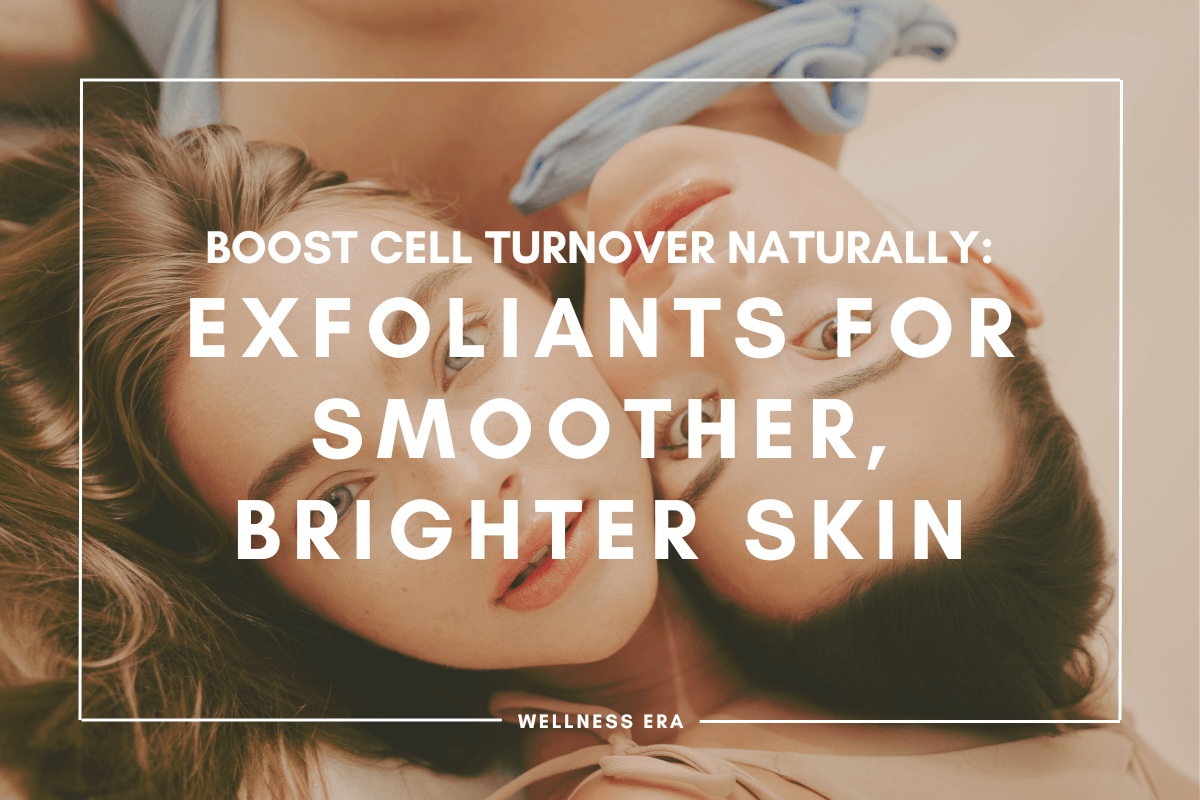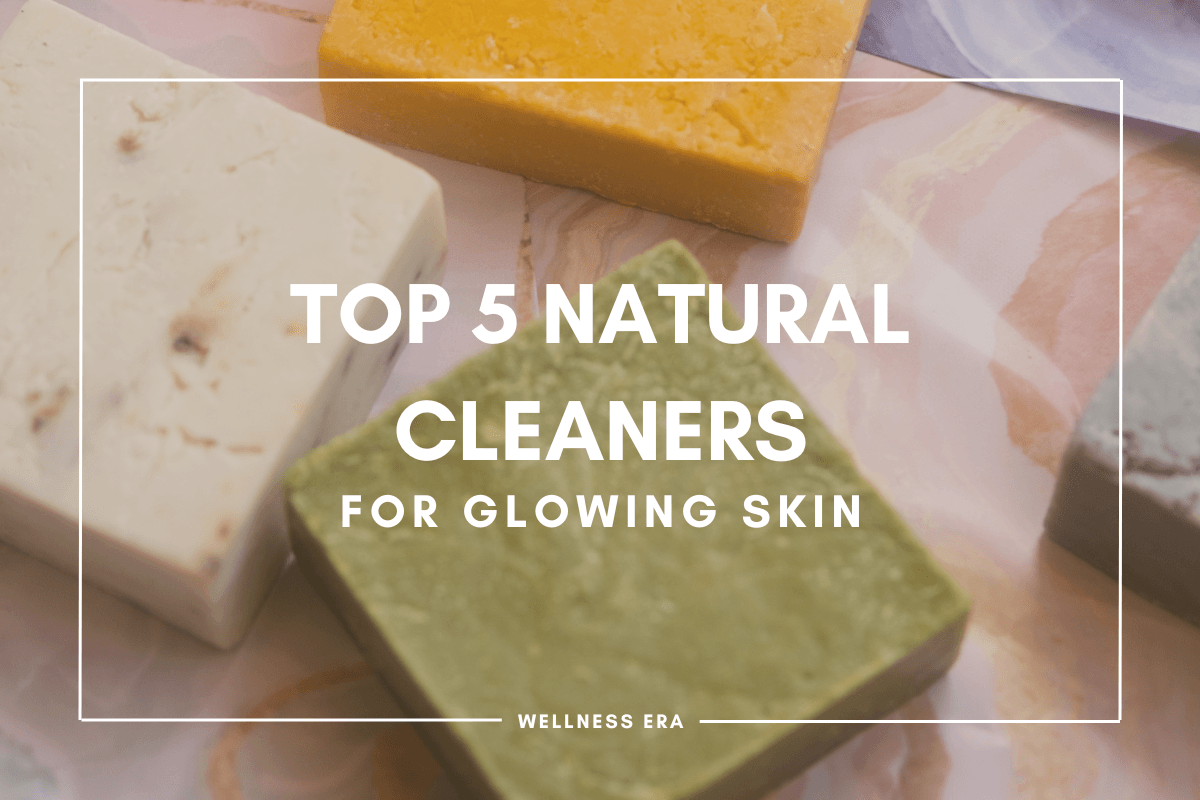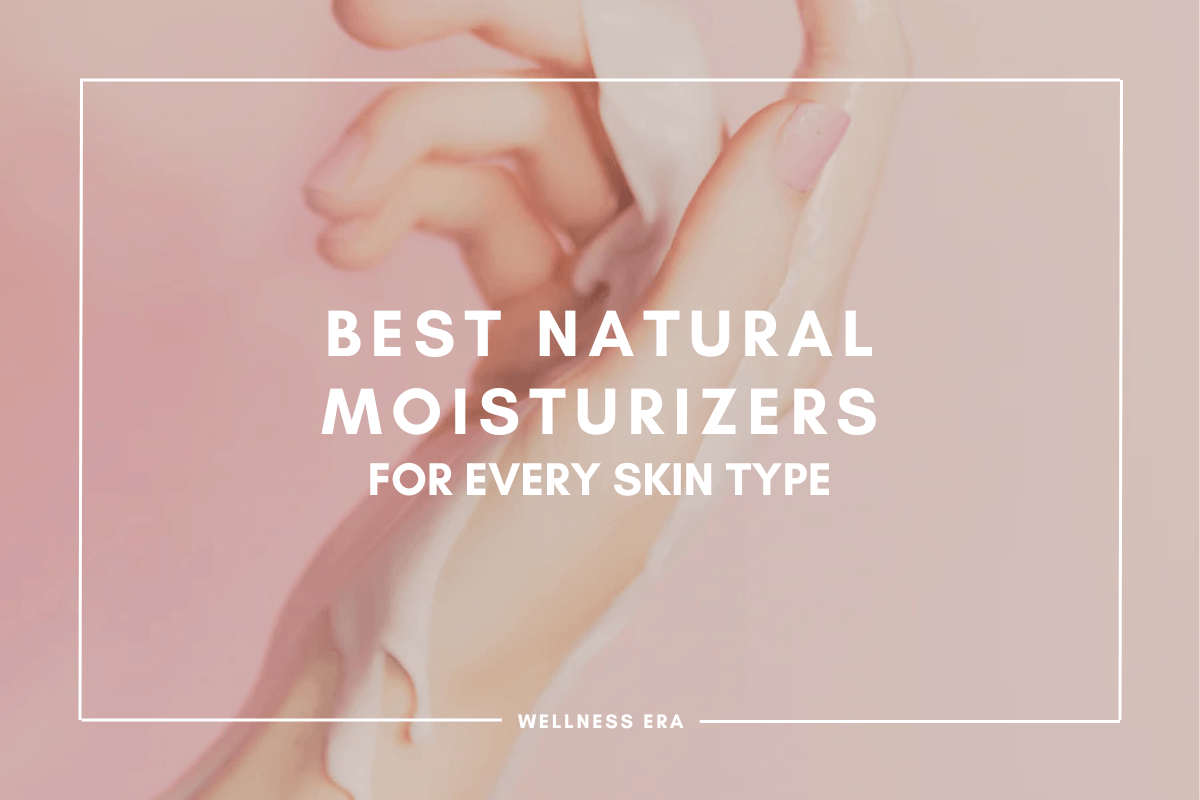5 Best Natural Exfoliants for Clear Skin
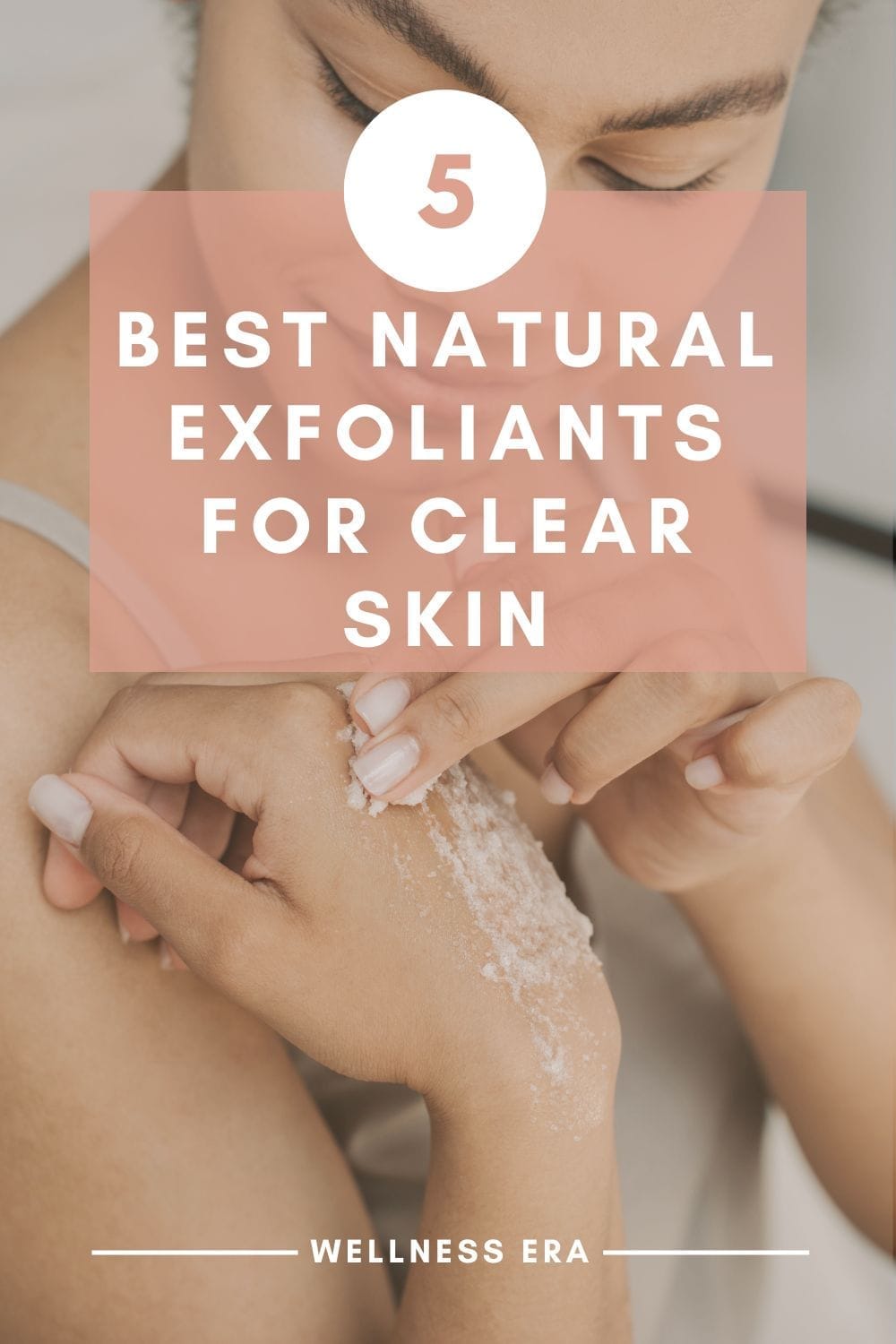
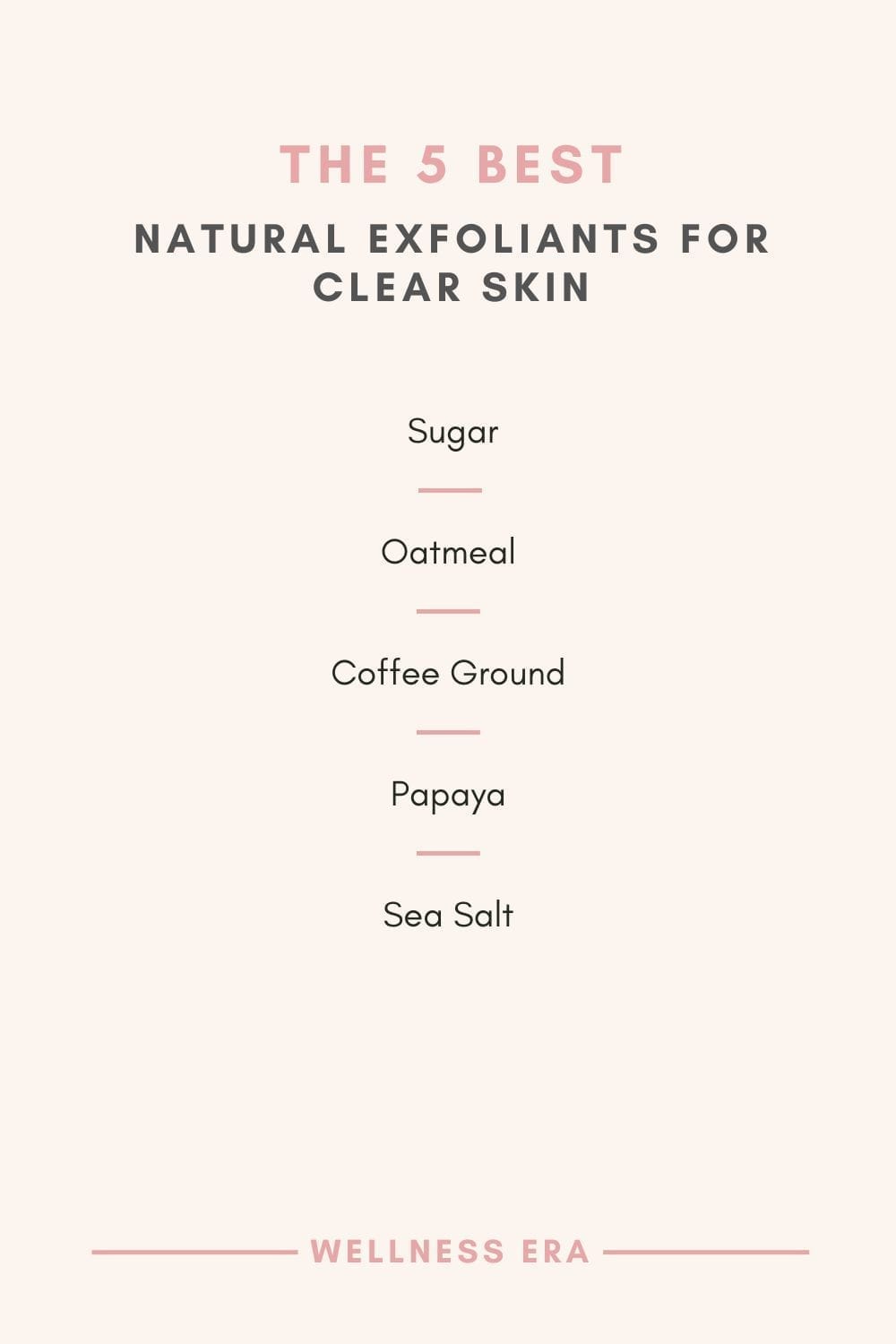
Achieving clear, radiant skin is a goal many of us share, and exfoliation is one of the most effective steps to get there. But while exfoliating can reveal a fresh, glowing complexion, choosing the right exfoliants is essential. Many store-bought exfoliants contain harsh chemicals or synthetic beads that can irritate or harm the skin. Thankfully, there are fantastic natural exfoliants that can effectively slough off dead skin cells without the side effects of conventional products.
This list dives into some of the best natural exfoliants that are gentle, effective, and eco-friendly. From gentle oatmeal to energizing coffee grounds, each option has its unique benefits and caters to different skin needs. So, if you’re ready to upgrade your skincare with the goodness of nature, keep reading to find the perfect natural exfoliant for your skin!
Exfoliation is key to revealing fresh, radiant skin, but it’s important to use the right methods for your skin type. Read more about how exfoliation supports healthy skin renewal in our guide onBoosting Cell Turnover for Brighter Skin.
1. Sugar: A Gentle Yet Effective Exfoliant
Sugar might just be one of the most accessible exfoliants, but it’s also one of the most effective. This natural ingredient contains small, dissolvable granules that gently buff away dead skin cells, making it an ideal choice for mechanical exfoliation. Additionally, sugar is a natural source of glycolic acid, an alpha hydroxy acid (AHA) that promotes cell turnover and skin renewal (Green, Ruey, and Van Scott, 2009). This means that sugar not only helps remove surface-level dead cells but also works at a deeper level, enhancing skin texture and radiance (Misra and Shrivastava, 2020).
Best For: Sugar works best for normal to dry skin types, as it provides hydration along with exfoliation. The natural glycolic acid in sugar helps retain moisture, making it an excellent choice for those needing a balance of exfoliation and hydration (Yu and Van Scott, 2004).
Usage Tips: To create a simple sugar scrub, mix sugar with a hydrating agent, such as honey, aloe vera, or jojoba oil. Gently massage in circular motions and rinse with warm water. Use 1–2 times per week for smooth, glowing skin while avoiding over-exfoliation.
Since exfoliation removes dead skin cells, following up with the right moisturizer helps maintain hydration and prevent dryness. Check out our guide on theBest Natural Moisturizers for Every Skin Typeto find the perfect post-exfoliation hydration for your skin.
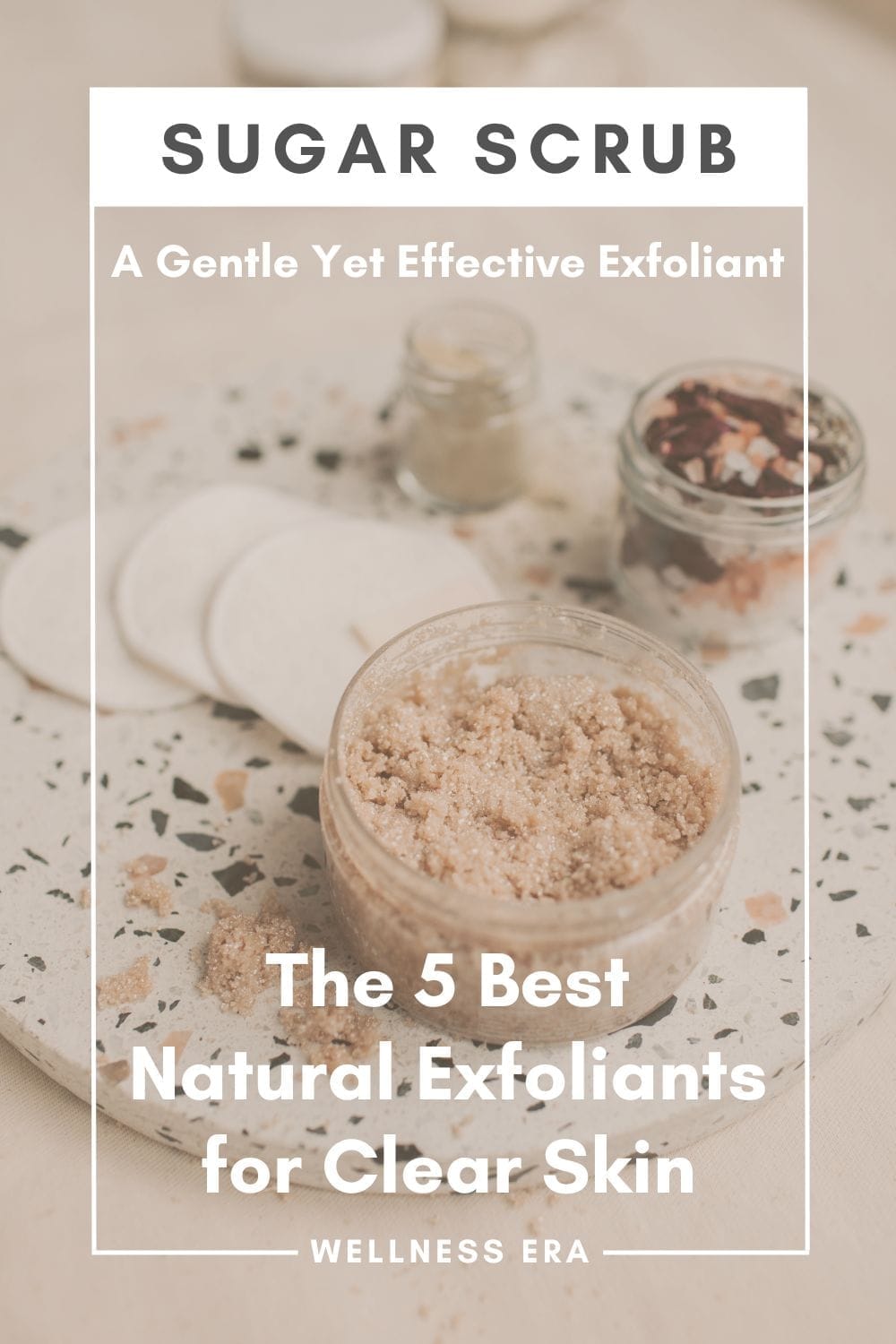
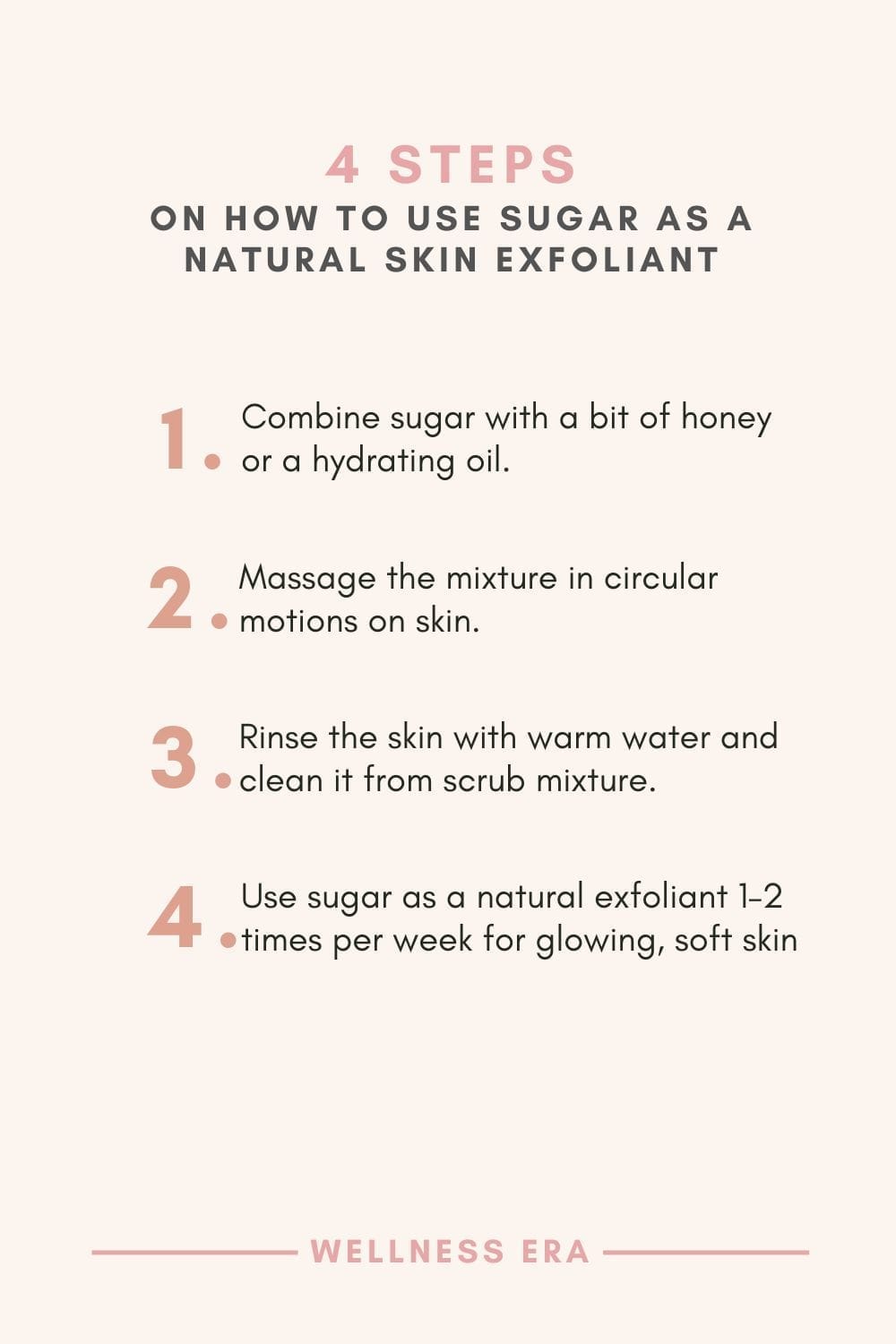
2. Oatmeal: The Soothing Exfoliant for Sensitive Skin
If you have sensitive or easily irritated skin, oatmeal is an excellent choice. This gentle, physical exfoliant provides soothing and anti-inflammatory properties, making it ideal for calming redness and irritation while softly buffing away dead skin cells (Reynertson et al., 2015). Oatmeal is rich in beta-glucans, which support the skin barrier and help retain moisture, making it beneficial for individuals with eczema, rosacea, or other sensitive skin conditions(Kurtz and Wallo, 2007).
Best For: Sensitive, irritated, or dry skin types benefit most from oatmeal, as it reduces inflammation while hydrating the skin. Clinical studies have shown that colloidal oatmeal can significantly reduce redness, itching, and dryness, making it a widely recommended ingredient for soothing skincare formulations (Zhao et al., 2021).
If you have sensitive skin, reducing inflammation is just as important as gentle exfoliation. Learn more on how to calm redness and irritation with natural remedies in our guide onReducing Inflammation Naturally for Smoother Skin.
Usage Tips: To create a gentle oatmeal scrub, grind oats into a fine powder and mix with water, aloe vera, or chamomile hydrosol. Apply to damp skin, gently massage in circular motions, and rinse with lukewarm water. For best results, use once a week to prevent over-exfoliation while keeping skin calm and hydrated.
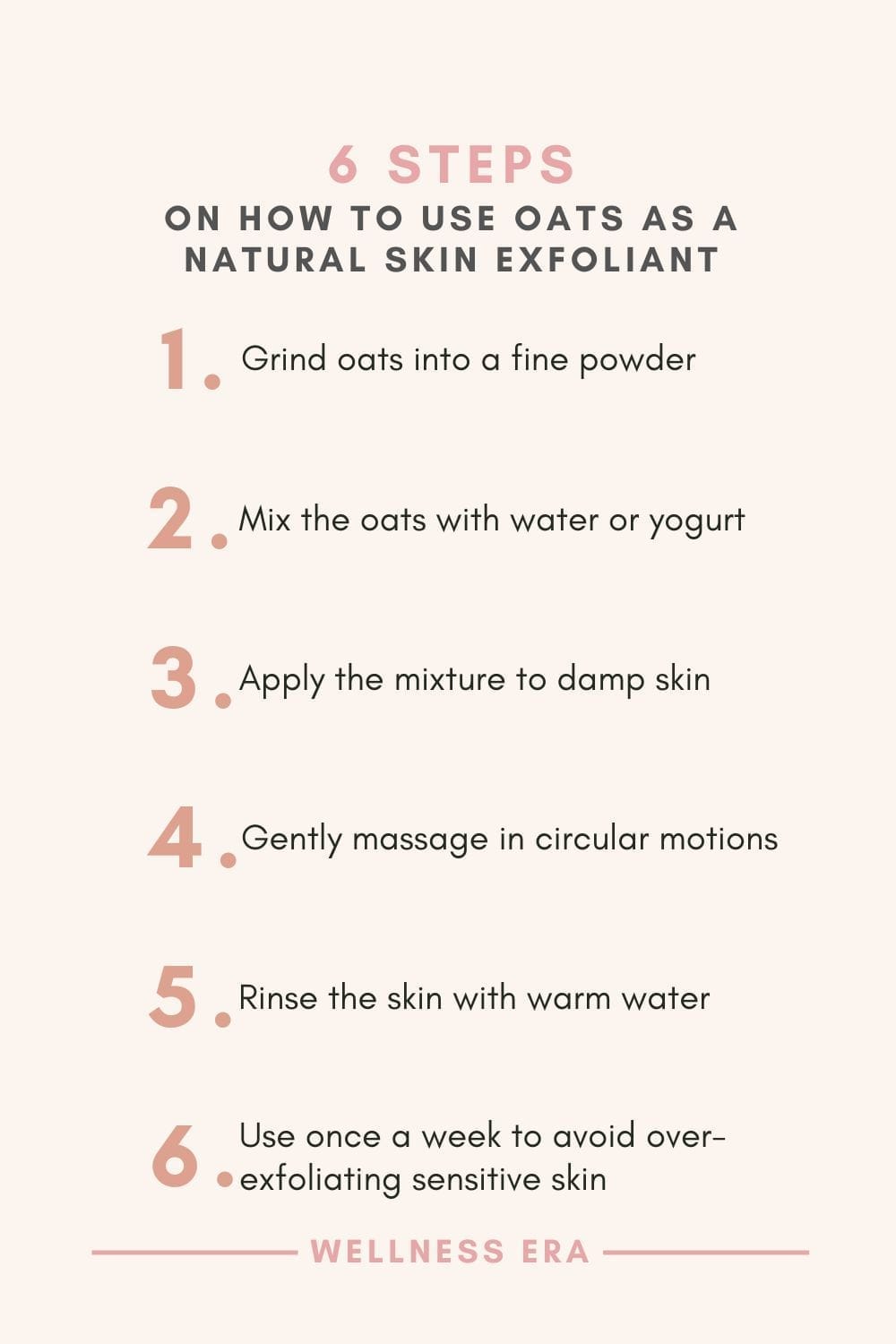
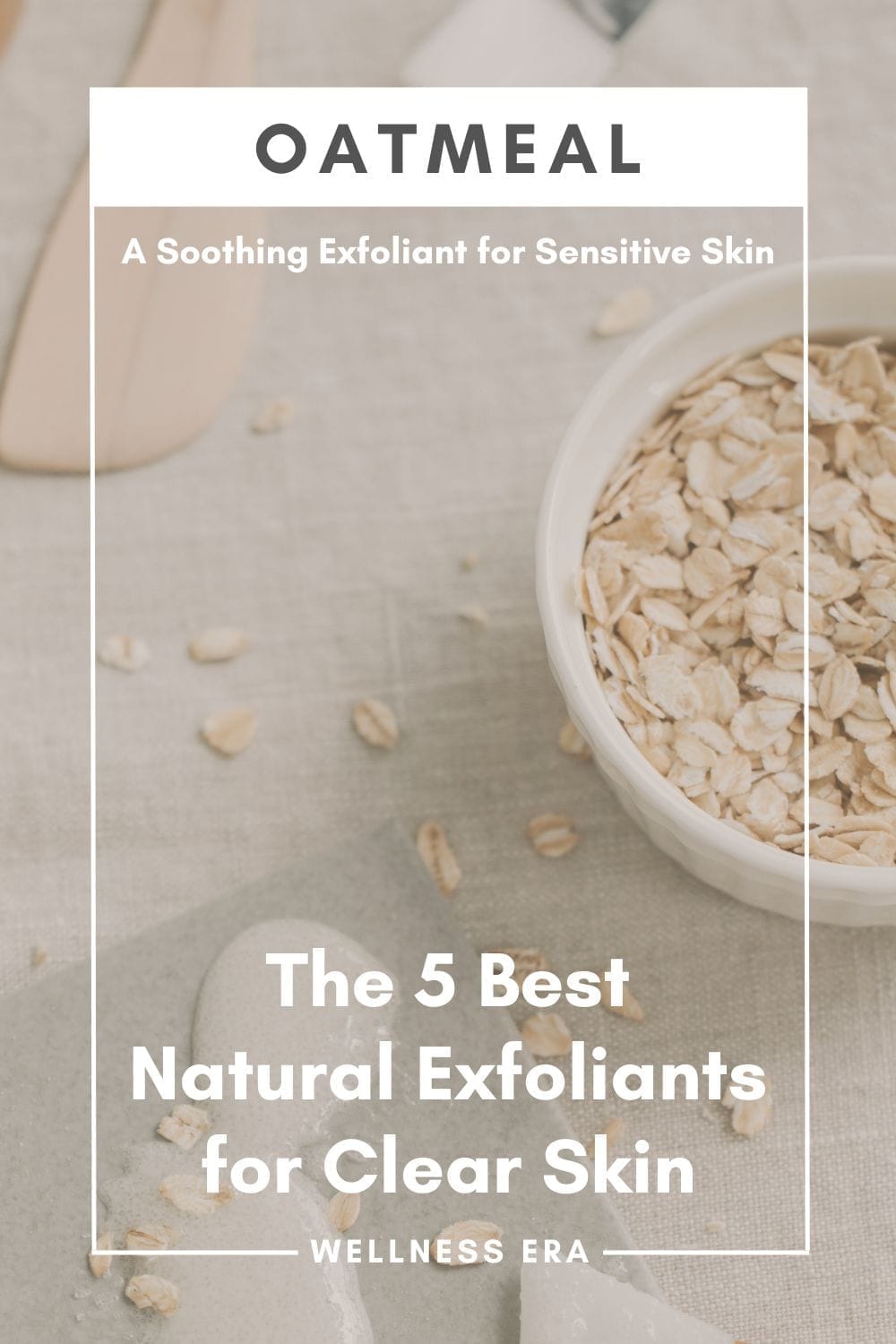
3. Ground Coffee: Energizing and Antioxidant-Rich
For a more invigorating exfoliation experience, ground coffee might be just what you need. The coarse texture of coffee grounds effectively removes dead skin cells and boosts circulation, giving your skin a refreshed and revitalized appearance (Rodrigues, Oliveira, and Alves, 2023). Additionally, coffee is rich in antioxidants, such as chlorogenic acids and caffeine, which help neutralize free radicals and protect the skin from premature aging and environmental stressors (Waghmare and Munjewar, 2023).
Discover more about how antioxidants can shield your skin from free radicals in our post onFighting Free Radicals with Antioxidants.
Best For: Dull, tired, or mature skin types will benefit from coffee exfoliation, as it helps to stimulate blood flow, improve skin tone, and enhance radiance. Studies suggest that the caffeine content in coffee may also help reduce puffiness and brighten the skin (Hasibuan and Sumaiyah, 2022).
Usage Tips: Mix ground coffee with coconut oil or olive oil to create a rich, moisturizing scrub. Gently massage onto the skin in circular motions, then rinse with lukewarm water. Use this scrub 1–2 times per week for smoother, brighter skinwhile avoiding excessive exfoliation.
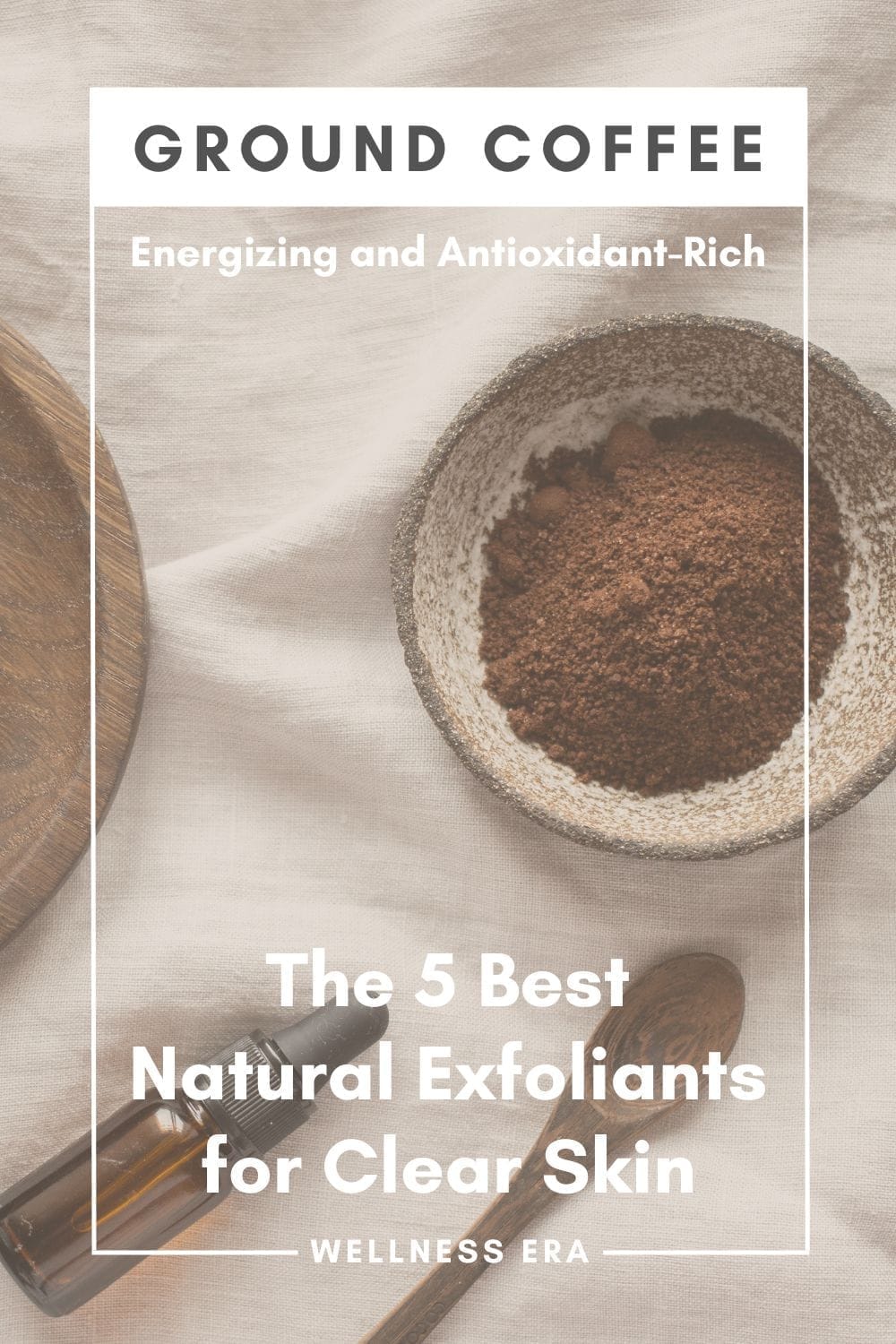
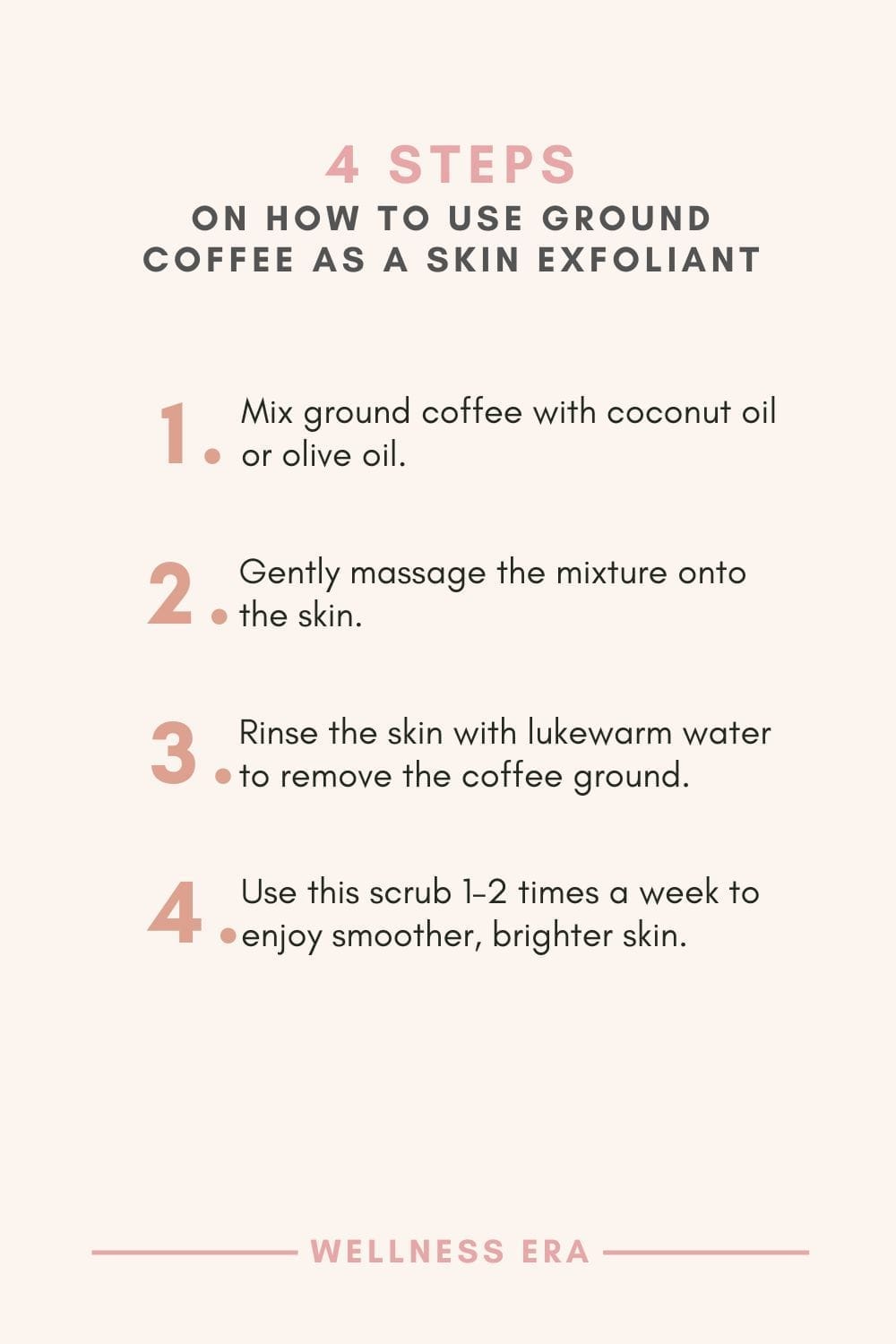
4. Papaya: The Enzyme Exfoliant for All Skin Types
Papaya is a tropical delight not only for the taste buds but also for the skin! This enzyme-based exfoliant contains papain, a proteolytic enzyme that dissolves dead skin cells without requiring abrasive scrubbing (Trevisol et al., 2022). Papain works by breaking down the proteins in dead skin cells, helping to promote a brighter, smoother complexion while minimizing irritation. This makes papaya ideal for sensitive and acne-prone skin, as it provides exfoliation without mechanical friction (Kandasamy, 2011).
Best For: Papaya is suitable for all skin types, particularly sensitive or acne-prone skin, as it offers a gentle yet effective way to remove dead skin, encourage cell turnover, and support a healthy glow.
Usage Tips: For a DIY papaya mask, mash a few pieces of ripe papaya into a smooth paste, apply to the face, and leave it on for 5–10 minutes before rinsing with lukewarm water. Use this enzyme exfoliant once a week to keep skin looking fresh and radiant while avoiding excessive exfoliation.
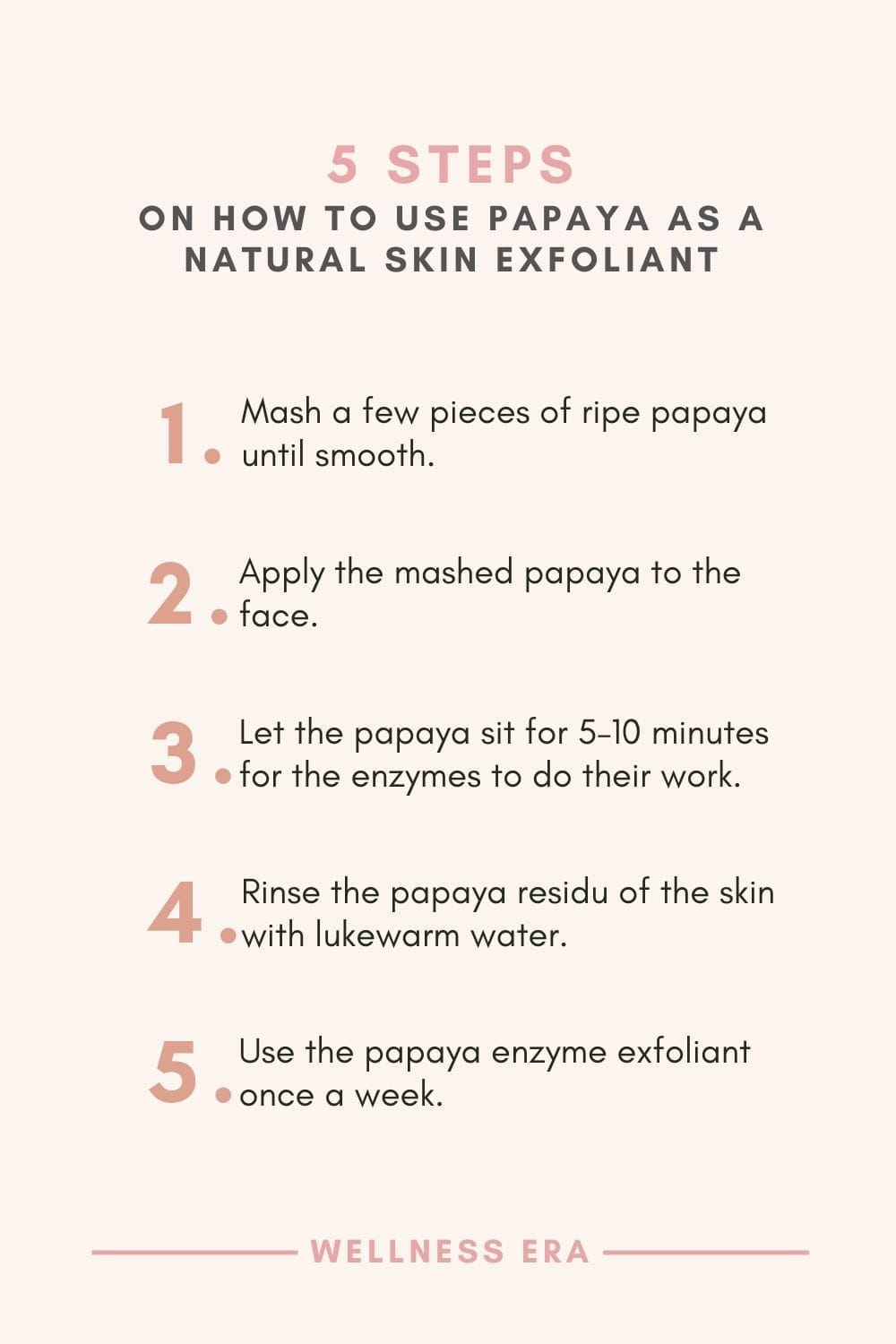
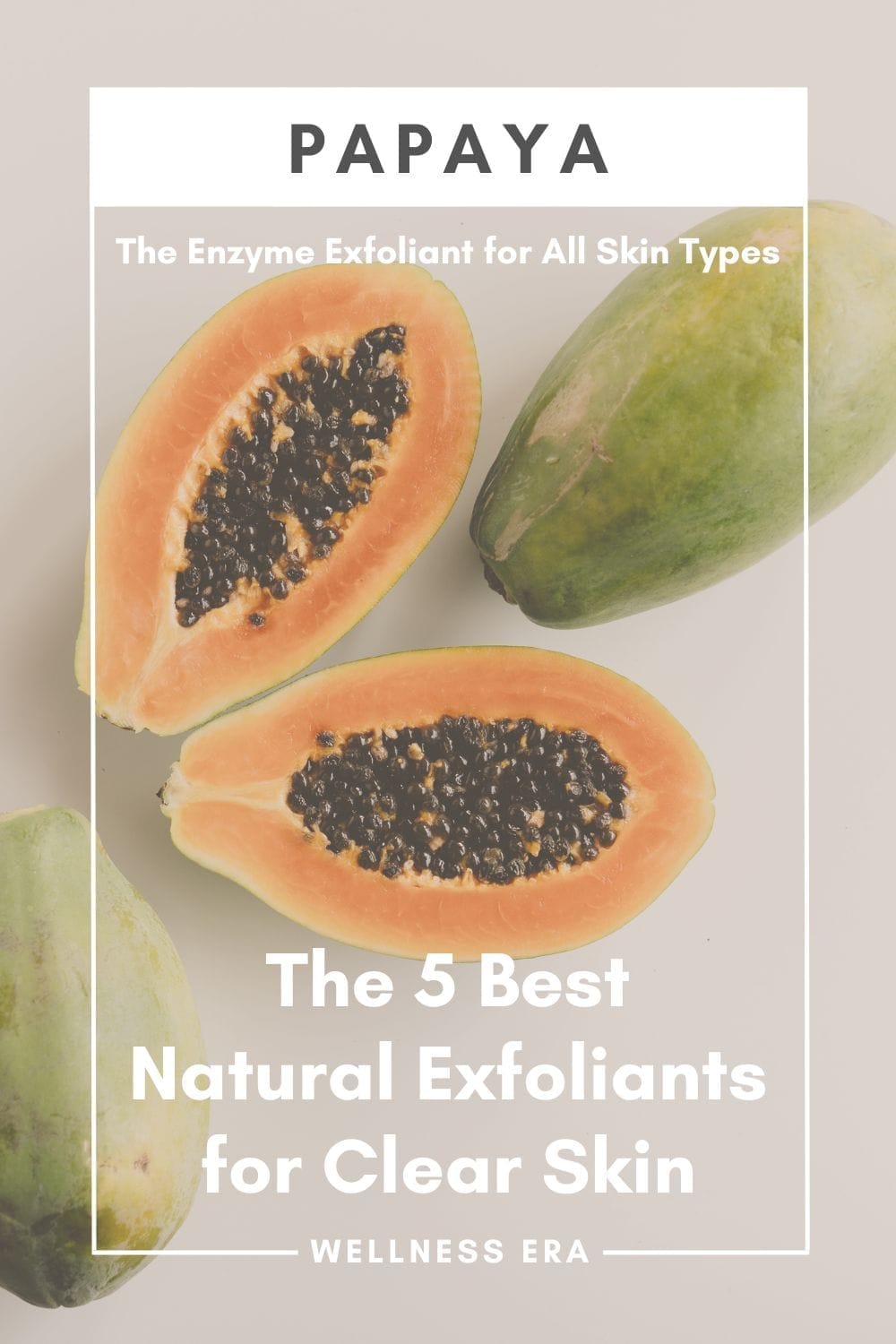
5. Sea Salt: The Mineral-Packed Exfoliant for Deep Cleaning
Sea salt is packed with essential minerals, such as magnesium, calcium, and potassium, which help purify the skin, promote hydration, and support skin barrier function (Chernoff, 2021). Due to its coarse texture, sea salt is an effective physical exfoliant that sloughs off dead skin cells and draws out impurities, making it particularly beneficial for oily or acne-prone skin (Riyaz and Arakkal, 2011).
However, because of its abrasive nature, sea salt should be used sparingly, as it can be too harsh for sensitive or dry skin. When combined with a moisturizing base, such as jojoba or olive oil, sea salt offers a powerful rejuvenating scrub that can leave the skin feeling refreshed and revitalized.
Best For: Sea salt is ideal for oily or acne-prone skin, as it helps detoxify pores and balance oil production. Those with sensitive or dry skin should use it sparingly or opt for finer-grained exfoliants to avoid irritation.
Sea salt is perfect for detoxifying oily, acne-prone skin, but managing oil production requires a balanced routine. Learn how to keep oily skin in check with ourStep-by-Step Guide to Managing Oily Skin Naturally.
Usage Tips: To make a sea salt scrub, mix the salt with a carrier oil, such as olive or jojoba oil, for a moisturizing effect. Use on damp skin, gently massage in circular motions, and rinse thoroughly. Apply once a week for a thorough exfoliation that leaves skin soft and refreshed.
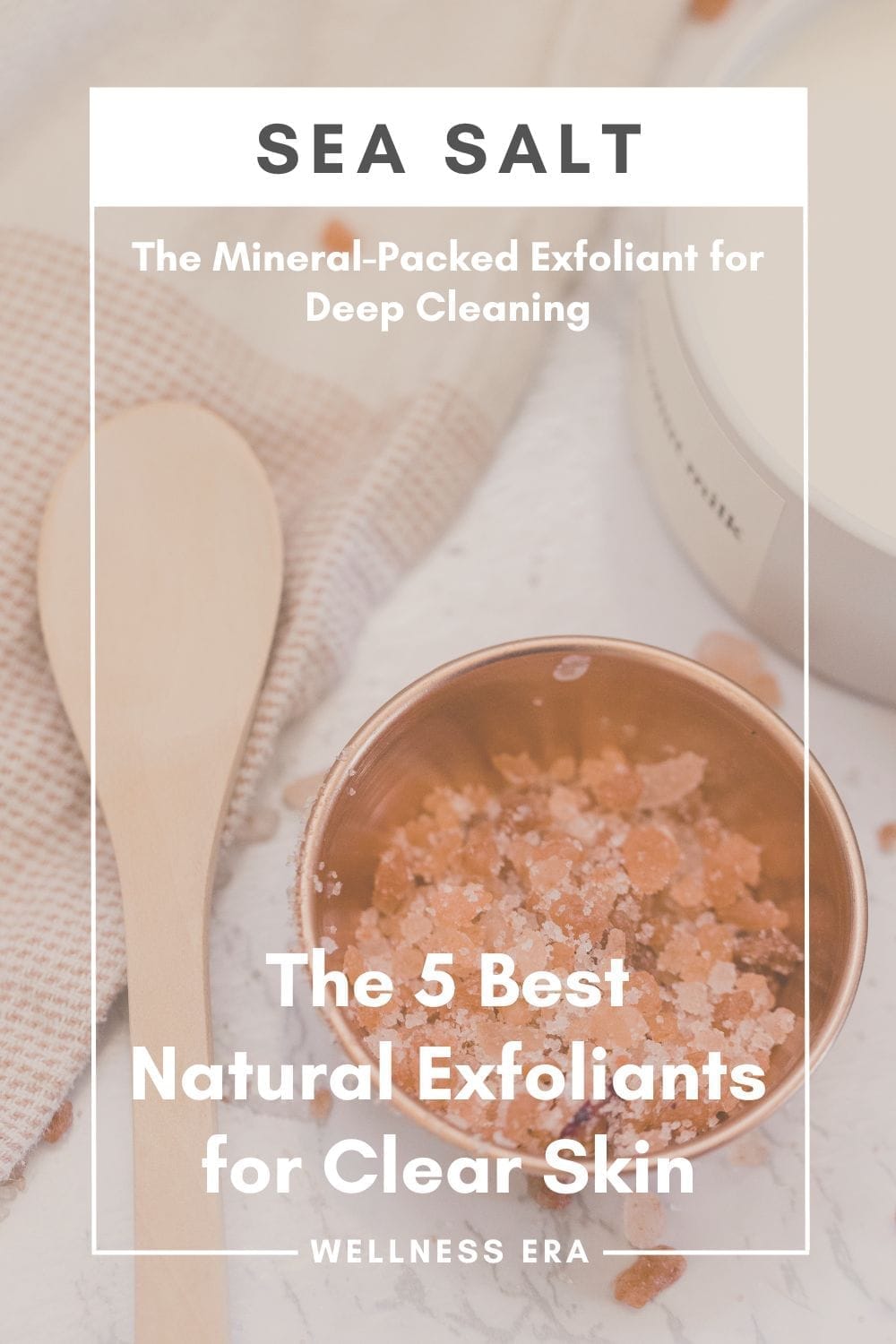
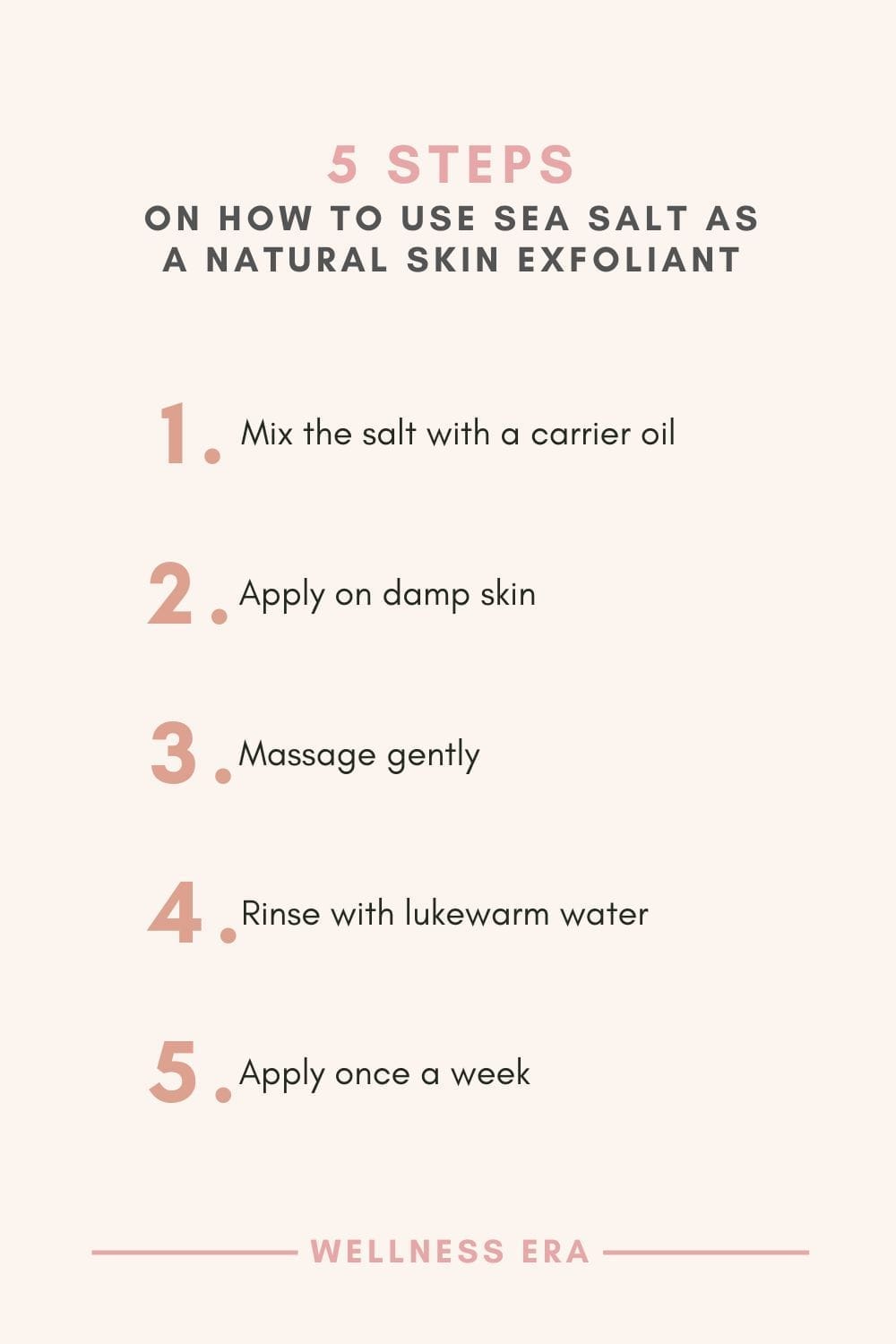
Exfoliating with an Organic Fabric Glove
For those who prefer a sustainable and gentle approach, an organic fabric exfoliating glove offers an ideal solution. Made from biodegradable materials such as organic cotton, bamboo, or hemp, these gloves provide a mild, eco-friendly exfoliation without the need for abrasive scrubs or harsh chemicals. Research suggests that natural fibersused in skincare accessories help reduce irritation while still effectively removing dead skin cells and improving circulation (Pandit et al., 2021).
Why Choose an Organic Fabric Glove?:Organic fabric gloves are gentle on the skin, making them suitable for all skin types, including sensitive skin. They offer a reusable alternative to disposable exfoliants, reducing waste and supporting an environmentally conscious skincare routine. Studies highlight that textile-based skincare tools made from organic and biodegradable materialscan provide effective exfoliation while maintaining the skin’s natural barrier (Parvin and Islam, 2020).
Best Practices: Choose a soft-textured glove, such as one made from organic cotton or bamboo. Use gentle circular motions on damp skin, applying minimal pressure to avoid irritation. To maintain hygiene and prevent bacterial buildup, wash and air-dry the glove after each use.
Using an organic exfoliating glove is a fantastic way to embrace both effective skincare and eco-friendly practices. By opting for sustainable materials, you’re not only caring for your skin but also helping the planet.
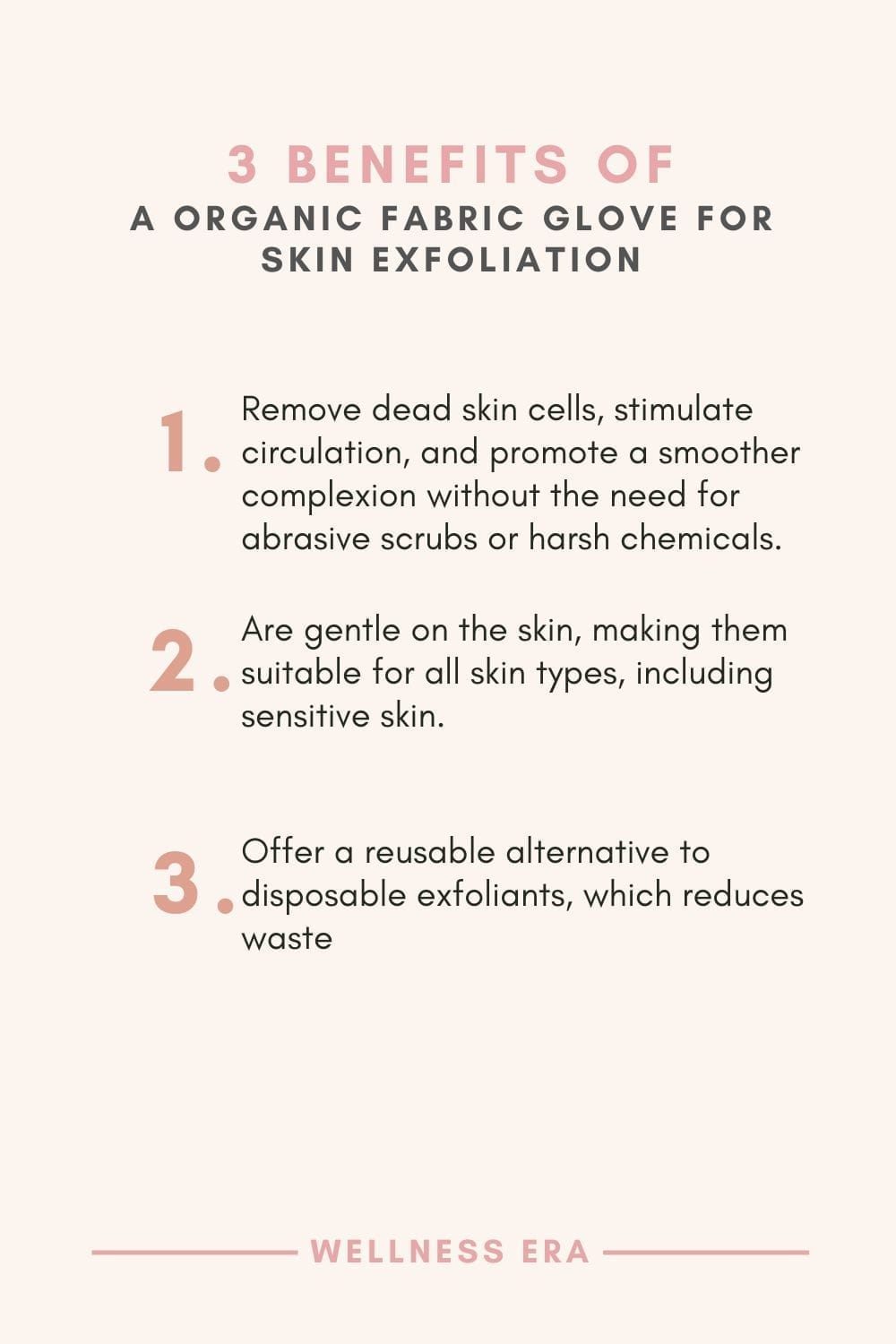
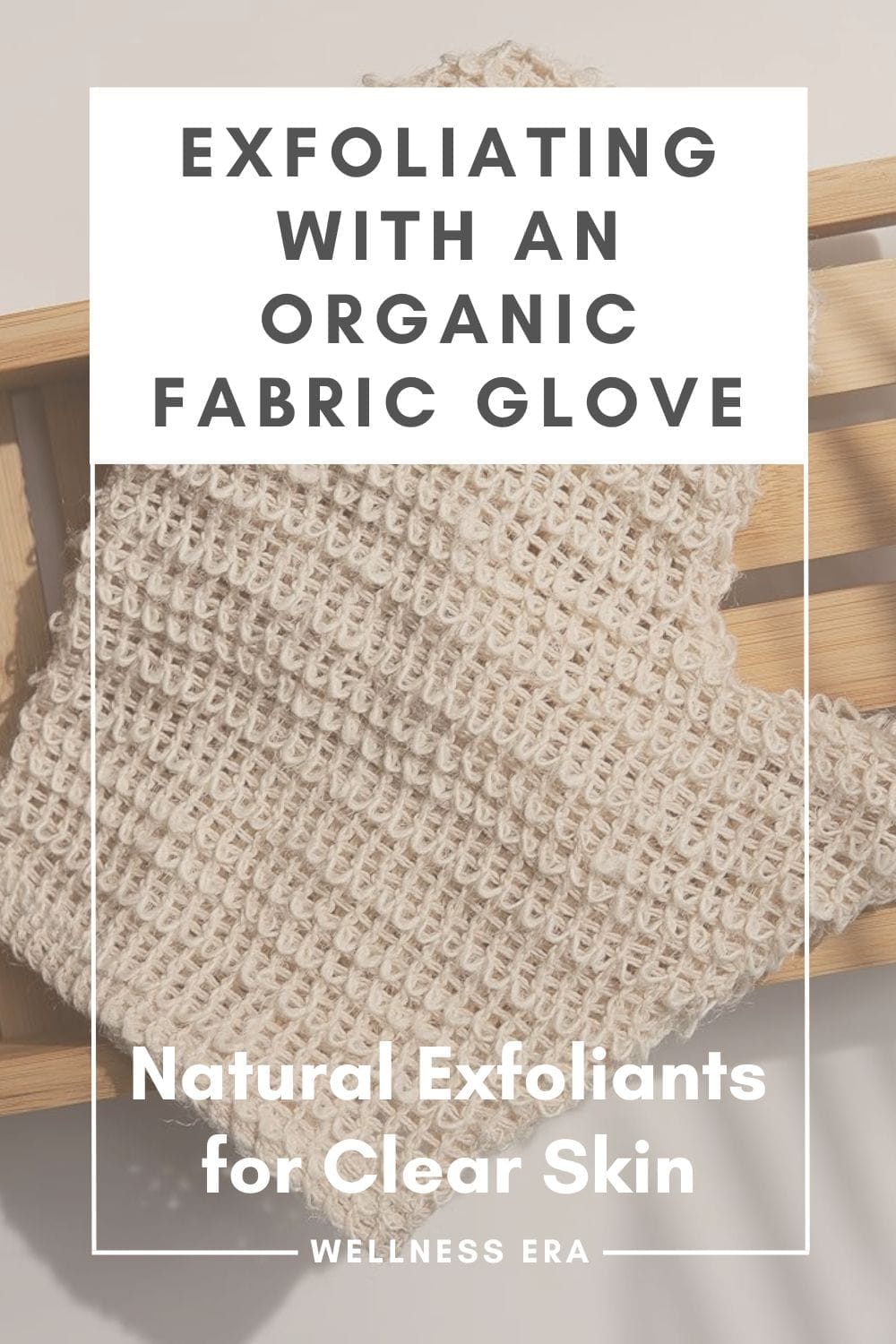
Exfoliating Face Skin vs. Body Skin: Key Differences and Tips
Exfoliating is essential for both face and body care, but because these areas have different skin thicknesses, sensitivities, and functions, they require specific approaches. Understanding these differences helps tailor an exfoliation routine that enhances skin health without causing irritation or damage.
Skin Sensitivity and Thickness
The skin on the face is generally thinner and more sensitive than the body’s skin. Studies show that facial skin has a thinner epidermis and a more delicate barrier function, making it more prone to irritation (Rahrovan et al., 2018). Because of this, gentle exfoliants—such as enzymes (e.g., papaya), oatmeal, or fine sugar granules—are recommended for facial use, as they provide effective exfoliation without causing microtears (Tagami, 2008).
In contrast, the skin on the body is thicker and more resilient, allowing it to tolerate coarser exfoliants, such as coffee grounds or sea salt scrubs. These exfoliants are especially beneficial for rougher areas like elbows, knees, and feet, where dead skin cells accumulate more significantly (Giacomoni et al., 2009).
Exfoliation Frequency
The ideal frequency of exfoliation varies between the face and body:
Facial Skin: Most skin types benefit from 1–2 exfoliation sessions per week, especially if the skin is sensitive or dry. Over-exfoliation can lead to redness, dryness, and weakened skin barriers, making gentle, hydrating exfoliants preferable (Tagami, 2008).
Body Skin: The thicker nature of body skin allows for more frequent exfoliation—up to 2–3 times per week, depending on skin type and exfoliant used. Regular exfoliation smooths skin texture, prevents ingrown hairs, and helps maintain hydration balance, especially for those who shave or wax (Rahrovan et al., 2018).
Exfoliating Tools and Methods
Face: Soft, finger-applied scrubs or enzymatic masks work best for the delicate facial skin. Harsh physical exfoliation (like loofahs or coarse scrubs) can cause irritation and damage the skin barrier.
Body: Tools like an organic fabric glove or dry brushing can be used for gentle but effective exfoliation. These tools help remove dead skin without relying on additional scrubs, making them a sustainable and eco-friendlyoption (Parvin and Islam, 2020).
By adjusting exfoliants, frequency, and techniques for face and body, you can create a customized skincare routinethat meets the unique needs of each area, ensuring smooth, healthy skin all over.
After exfoliation, cleansing with the right natural products ensures that your skin stays refreshed and free from impurities. Discover the best options in our guide on Top 5 Natural Cleansers for Glowing Skin.
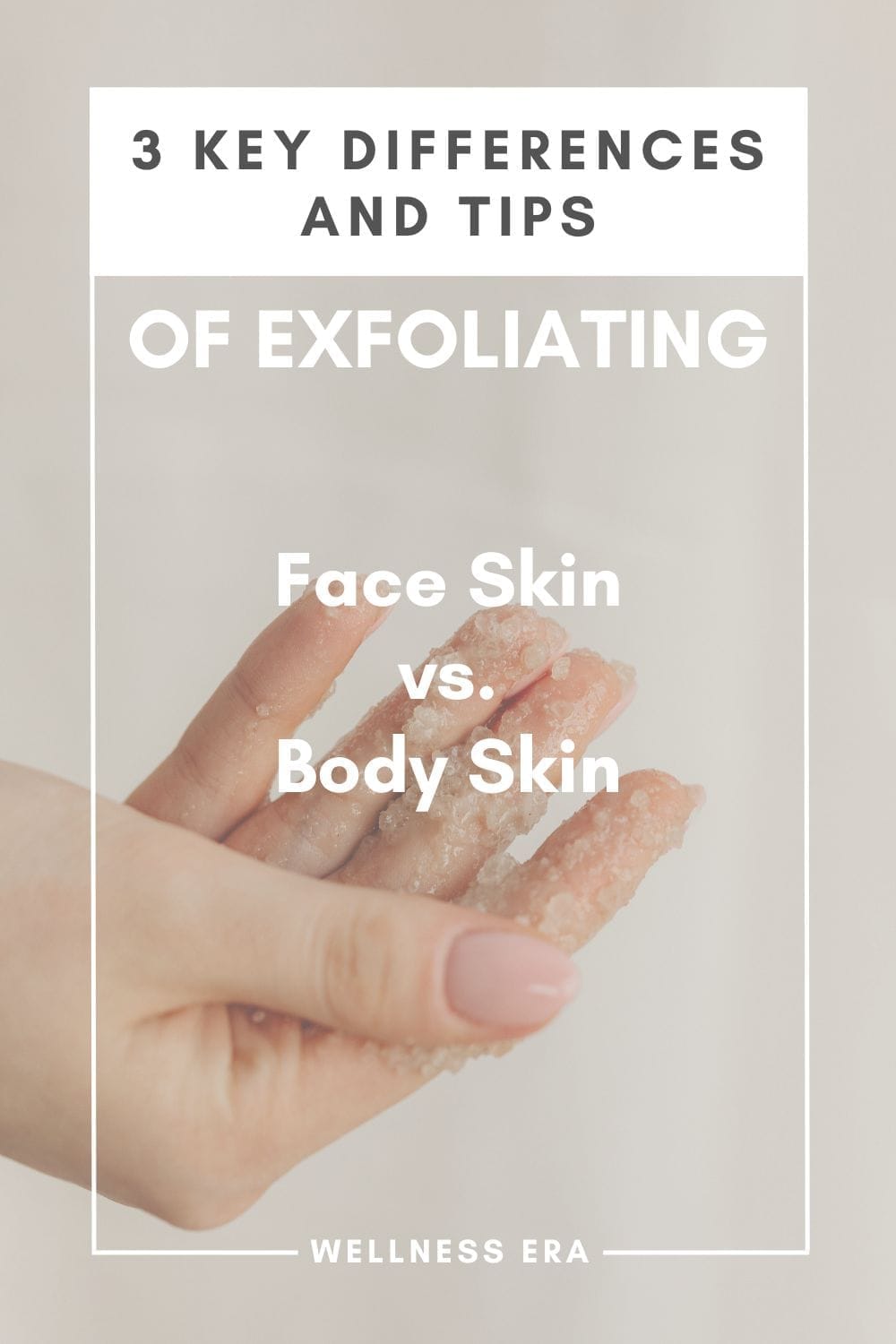
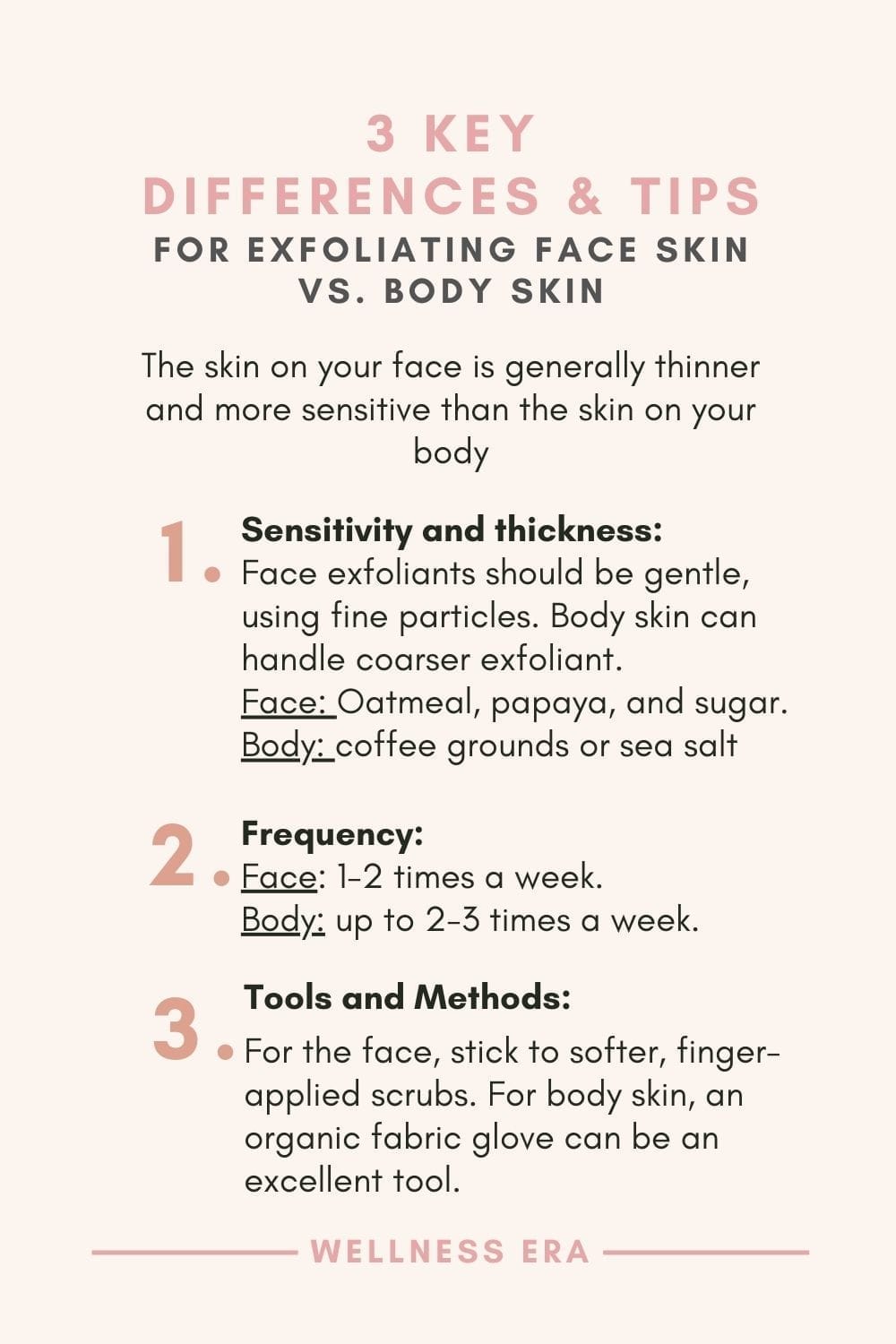
Conclusion
Exfoliating is an important skincare practice that brings a host of benefits, from promoting cell turnover to enhancing radiance and texture. By choosing natural exfoliants like sugar, oatmeal, coffee, papaya, and sea salt, you can achieve these results without the harshness of synthetic ingredients. Each exfoliant caters to specific skin needs, allowing you to find the perfect match for your skin type.
Remember to adjust your exfoliation routine based on whether you’re caring for your face or body, as each area has its unique requirements. Embrace these natural exfoliation methods, and enjoy a skincare routine that respects both your skin and the environment.
References
Chandrasekar, R. (2020) ‘A comprehensive review on herbal cosmetics in the management of skin diseases’, Research Journal of Topical and Cosmetic Sciences, 11(1), pp. 1-8. Available at: Indian Journals
Chernoff, G. (2021) ‘A novel combination therapy in aesthetic and reconstructive surgery: Sea salt, exfoliation, cavitating ultrasound, and high-intensity multiwavelength LED’, Journal of Clinical and Cosmetic Dermatology, pp. 1-10. Available at: https://www.quantificare.com/wp-content/uploads/2021/05/SALTFACIAL_J-OF-CLIN-AND-COSM-DERM_compressed.pdf
Green, B.A., Ruey, J.Y., and Van Scott, E.J. (2009) ‘Clinical and cosmeceutical uses of hydroxy acids’, Clinics in Dermatology, 27(5), pp. 495-501. Available at: Sciencedirect
Giacomoni, P.U., Mammone, T. and Teri, M. (2009) ‘Gender-linked differences in human skin’, Journal of Dermatological Science, 55(3), pp. 144-149. Available at: Sciencedirect
Hasibuan, P.A.Z. and Sumaiyah, S. (2022) ‘Formulation and evaluation of body scrub cream containing ethanol extract of black cumin seeds (Nigella sativa L.) and coffee grounds (Coffea arabica L.)’, Indonesian Journal of Pharmaceutical and Clinical Research, pp. 1-12. Available at: Talenta
Kandasamy, R. (2011) ‘Skin care with herbal exfoliants’, Functional Plant Science and Biotechnology, 5(S1), pp. 94-97. Available at: Globalsciencebooks
Kurtz, E.S. and Wallo, W. (2007) ‘Colloidal oatmeal: History, chemistry, and clinical properties’, Journal of Drugs in Dermatology, 6(2), pp. 167–170. Available at: JDDonline
Misra, V. and Shrivastava, A.K. (2020) ‘Expanding Horizon of Sugar Application: Skin Care and Cosmetics’, in Sugar and Sugar Derivatives: Changing Perspectives. Springer, pp. 205-218. Available at: Springer
Nowak, I., Issayeva, A., and Dąbrowska, M. (2022) ‘Possibilities of using medicinal plant extracts and salt-containing raw materials for cosmetic purposes’, Molecules, 27(16), p. 5122. Available at: MDPI
Pandit, P., Maity, S., Singha, K., Uzun, M., and Shekh, M. (2021) ‘Potential biodegradable textiles in skincare applications’, Cleaner Engineering and Technology, 2(3), pp. 78-94. Available at: ScienceDirect
Parvin, F. and Islam, S. (2020) ‘A study on the environmental benefits of biodegradable textiles in skincare’, Biomedical Journal of Science and Technology Research, 24(6), pp. 1014-1022. Available at: ResearchGate
Rahrovan, S., Fanian, F., Mehryan, P., Humbert, P. and Firooz, A. (2018) ‘Male versus female skin: What dermatologists and cosmeticians should know’, International Journal of Women’s Dermatology, 4(4), pp. 224–228. Available at: ScienceDirect
Reynertson, K.A., Garay, M., Nebus, J. et al. (2015) ‘Natural extracts for skin barrier repair: Mechanisms and clinical application’, Journal of Cosmetic Dermatology, 14(1), pp. 22-32. Available at: Wiley
Riyaz, N. and Arakkal, F.R. (2011) ‘Spa therapy in dermatology’, Indian Journal of Dermatology, Venereology, and Leprology, 77(2), pp. 128-134. Available at: https://ijdvl.com/content/126/2011/77/2/Images/ijdvl_2011_77_2_128_77450.pdf
Rodrigues, R., Oliveira, M.B.P.P., and Alves, R.C. (2023) ‘Chlorogenic acids and caffeine from coffee by-products: A review on skincare applications’, Cosmetics, 10(1), p.12. Available at: MDPI
Tagami, H. (2008) ‘Location-related differences in structure and function of the stratum corneum with special emphasis on those of the facial skin’, International Journal of Cosmetic Science, 30(6), pp. 413–414. Available at: Wiley
Trevisol, T.C., Henriques, R.O., Souza, A.J.A., Cesca, K. (2022) ‘An overview of the use of proteolytic enzymes as exfoliating agents’, Journal of Cosmetic Dermatology, 21(3), pp. 1-10. Available at: Wiley
Waghmare, M.C.S. and Munjewar, M.S.C. (2023) ‘Formulation and evaluation of herbal face scrub that exfoliates skin with coffee’, Semantics Scholar, pp. 1-10. Available at: https://pdfs.semanticscholar.org/870c/56584aea1caf004480ad7aee3557932e3fff.pdf
Yu, R.J. and Van Scott, E.J. (2004) ‘Alpha‐hydroxyacids and carboxylic acids’, Journal of Cosmetic Dermatology, 3(2), pp. 76-87. Available at: Wiley
Zhao, Y., Bajaj, T., Ando, J., et al. (2021) ‘The effect of colloidal oatmeal on skin hydration and barrier function: A systematic review’, Clinical, Cosmetic and Investigational Dermatology, 14, pp. 1793–1805. Available at: Tandfonline
Frequently Asked Questions (FAQ)
How often should I exfoliate sensitive skin?
Sensitive skin generally benefits from exfoliating just once a week. Using gentle options like oatmeal or enzyme exfoliants from papaya can prevent irritation while still providing a soft, smooth complexion.
For sensitive skin, over-exfoliation can lead to irritation. Learn how to keep your skin calm while maintaining smoothness in our guide onReducing Inflammation Naturally for Smoother Skin.
Can I use body exfoliants on my face?
It’s best to avoid using body exfoliants, such as sea salt or coffee grounds, on the face as these can be too harsh and may cause micro-tears or irritation. Stick to gentle, fine-grain exfoliants or enzyme-based options for the delicate skin on your face.
Is it safe to exfoliate daily?
For most skin types, daily exfoliation is too frequent and can lead to irritation, dryness, or compromised skin barriers. A few times a week is typically enough to keep skin refreshed without over-exfoliating.
Find out how often you should exfoliate for the best results in our post onBoosting Cell Turnover for Brighter Skin.
What’s the advantage of using an organic exfoliating glove?
An organic fabric glove provides a sustainable and gentle way to exfoliate, especially for the body. Made from biodegradable materials, it’s both skin-friendly and eco-conscious, ideal for maintaining smooth skin on the arms, legs, and other areas.
How do I know if an exfoliant suits my skin?
Always do a patch test on a small area of skin before applying a new exfoliant to your face or body. If there’s no irritation after 24 hours, the exfoliant is likely safe to use regularly.
What should I apply after moisturizing?
Keeping your skin hydrated after exfoliation is essential for maintaining its glow and balance. Discover the best natural moisturizers to pair with your exfoliation routine in our guide onBest Natural Moisturizers for Every Skin Type.
Here is something you might also like..
Would you like to receive something special?
Try out the best, inspirational weekly newsletter for your natural wellness era!
My Wellness Era Weekly
SUBSCRIBE TO OUR NEWSLETTER
Your Weekly Dose of Natural Wellness
Fill out the form below, and you will reveice "My Wellness Era Weekly" delivered to your inbox.
What you can expect: a short, warm, and personal note from our founder. Mindset shifts, journal prompts, or self-care reminders. Inspiring quotea related to wellness, mindfulness, or self-love. Small, actionable wellness habits you can try. Recomendations we love, are testing, or recently discovered. Highlights of our latest blog posts.
+++ What we’re loving every single week.
QUICK LINKS
SOCIAL
CATEGORIES



